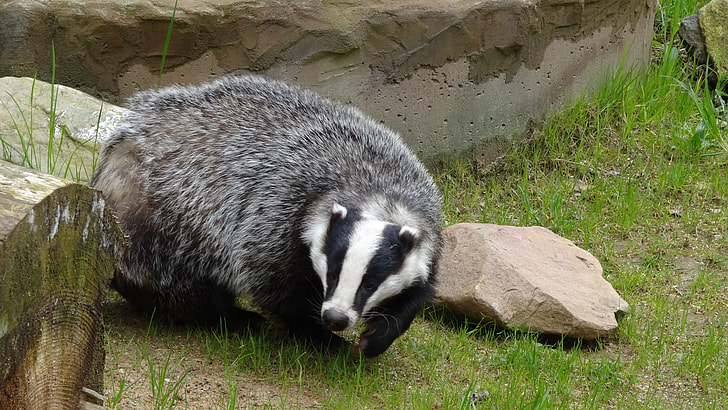2nd November – Badgers in Scotland
Guest Speaker: Jill Sowden, Scottish Badgers.
Jill began her talk by looking at the distribution of badgers; the European badger is found across Europe and Asia from Ireland to Japan. From the last survey (2006-9) there are approximately 340,000 badgers in the UK, of which about 10% are in Scotland.

The badger is an omnivorous predator with a long, low slung wedge shaped body, a long tail, short legs and powerful spadelike feet and claws for digging. It has poor eyesight but very good hearing and sense of smell. It is grey/black with distinctive stripes on its face.
Examination of a badger skull reveals very powerful jaws – a badger bite is very serious.
Badgers have a torpid period from November to January. Females will mate throughout the year and can delay the development of the embryo in response to conditions.
Diet: 50% of diet consists of earthworms, of which they may consume 150 per night. Also cereals, all kinds of insects including bees and wasps, fruit and tubers, small mammals. Badgers do not hunt; they are opportunists. They forage widely, hence the incidence of roadkill.
Habitat: broad leaf and mixed woodland, on slopes and among tree roots; hedgerows, ditches, riverbanks, open field and moorland. In urban areas can be found on rubbish dumps and old coal heaps. They live in clans and will defend their territory. These setts can extend for up to five metres underground; the latrines are always separate. A sett may be identified by heaps of fresh excavated soil, discarded bedding, rocks and stones, paw prints, hair on barbed wire, dung, foraging holes and well used tracks (badgers can travel up to 7 miles a night).
Jill’s talk was well illustrated with photographs, maps and charts. There was some discussion of persecution and badger baiting, which are the biggest threats to badgers apart from road traffic. Because of different agricultural practice, bovine TB is not an issue in Scotland.
